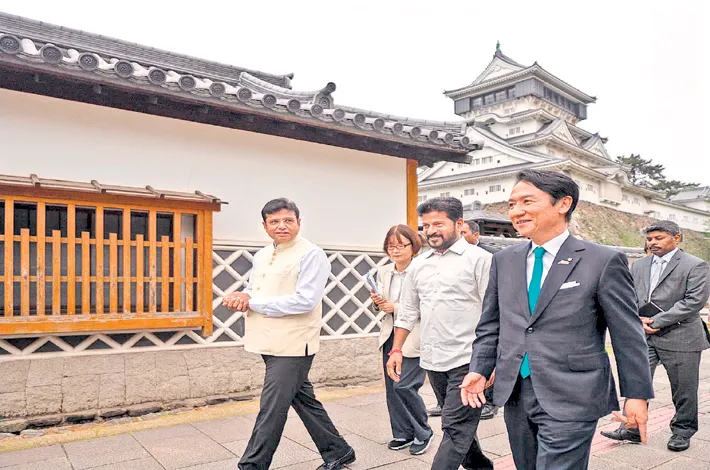Teaching Basic Manners and Decency to Indian Children
21-04-2025 12:00:00 AM

Schools play a vital role in reinforcing manners. Indian schools can integrate values education into the curriculum through activities like group projects, which teach teamwork and respect, or cleanliness drives, which emphasize civic responsibility. Community events, such as satsangs or neighborhood gatherings, provide opportunities for children to practice social skills. Teachers and community leaders can also organize workshops on etiquette, tailored to Indian cultural norms
In the vibrant and diverse tapestry of Indian culture, instilling basic manners and decency in children is a cornerstone of nurturing responsible, empathetic, and respectful individuals. As India continues to modernize and globalize, the importance of teaching children these timeless values remains paramount. Manners and decency are not just about following etiquette; they reflect a deeper understanding of respect, kindness, and social harmony. This article explores effective strategies for teaching Indian children these essential qualities, blending traditional values with contemporary approaches.
The Cultural Context of Manners in India
India’s rich cultural heritage emphasizes values like respect for elders, hospitality, and humility. From the concept of Atithi Devo Bhava (the guest is God) to the practice of touching elders’ feet as a sign of respect, Indian traditions are steeped in behaviors that promote decency. However, in today’s fast-paced world, where nuclear families, urban lifestyles, and digital distractions are increasingly common, children may not naturally absorb these values. Parents, educators, and communities must take deliberate steps to ensure that children learn and practice manners that align with both Indian ethos and global citizenship.
Why Manners and Decency Matter
Manners are the building blocks of social interactions. They help children navigate relationships, foster empathy, and create a positive impression. Decency, on the other hand, goes beyond surface-level politeness—it reflects a child’s ability to act with integrity, kindness, and respect for others’ feelings. In a diverse country like India, where people from different religions, languages, and backgrounds coexist, teaching children to be polite and considerate helps promote unity and mutual respect. Moreover, well-mannered children are more likely to succeed in academic, professional, and personal spheres, as they can communicate effectively and build strong relationships.
Strategies for Teaching Manners and Decency Lead by Example
Children learn by observing the adults around them. Parents and teachers must model the behavior they wish to see. For instance, saying “please” and “thank you,” greeting neighbors warmly, or showing patience in a queue demonstrates polite behavior. In Indian households, parents can exemplify respect by addressing elders with appropriate honorifics (like ji or didi) or offering help to guests. When children see adults practicing kindness and humility, they are more likely to emulate these traits.
Incorporate Cultural Practices
Indian traditions offer numerous opportunities to teach manners. For example, encouraging children to participate in family rituals, such as serving food to guests during festivals or helping with household chores, instills a sense of responsibility and hospitality. Teaching children to say Namaste or other regional greetings with a smile can be a simple yet powerful way to introduce politeness. Storytelling is another effective tool—tales from the Panchatantra, Ramayana, or Mahabharata often carry lessons about respect, honesty, and kindness that resonate with young minds.
Set Clear Expectations
Children need guidance to understand what constitutes good manners. Parents can create age-appropriate rules, such as not interrupting when someone is speaking, knocking before entering a room, or apologizing for mistakes. In Indian contexts, specific behaviors—like not wasting food, addressing teachers respectfully, or keeping public spaces clean—can be emphasized. Consistency is key; reinforcing these expectations through gentle reminders or praise helps children internalize them.
Teach Empathy and Respect for Diversity
Decency stems from understanding and valuing others’ perspectives. In India’s multicultural society, children should learn to respect people from different backgrounds. Parents can encourage this by exposing children to diverse festivals, foods, and languages, fostering an appreciation for India’s pluralism. Role-playing scenarios, such as how to respond to a classmate from a different community, can help children practice empathy. For instance, teaching a child to share sweets during Diwali or Eid with neighbors of all faiths reinforces inclusivity.
Use Positive Reinforcement
Praising children when they display good manners encourages them to continue. For example, acknowledging a child for saying “thank you” after receiving a gift or for helping a younger sibling creates a positive association with these behaviors. In Indian families, verbal appreciation or small rewards (like extra playtime) can be effective. However, criticism should be constructive—rather than scolding a child for forgetting to greet someone, gently remind them of the importance of the gesture.
Address Digital Etiquette
In the age of smartphones and social media, teaching digital manners is crucial. Children should learn to communicate respectfully online, avoid cyberbullying, and respect others’ privacy. Parents can set rules, such as no devices during family meals, to encourage face-to-face interaction. Explaining the impact of hurtful comments on social platforms can help children understand the broader implications of their actions.
Involve Schools and Communities
Schools play a vital role in reinforcing manners. Indian schools can integrate values education into the curriculum through activities like group projects, which teach teamwork and respect, or cleanliness drives, which emphasize civic responsibility. Community events, such as satsangs or neighborhood gatherings, provide opportunities for children to practice social skills. Teachers and community leaders can also organize workshops on etiquette, tailored to Indian cultural norms.
Challenges and Solutions
One challenge is the influence of media and peer groups, which may sometimes glorify rudeness or aggression. Parents can counter this by discussing media content with children and highlighting positive role models. Another challenge is the generational gap—some traditional practices, like bowing to elders, may feel outdated to modern children. In such cases, parents can explain the underlying values (e.g., respect) and adapt practices to suit contemporary contexts.
Conclusion
Teaching basic manners and decency to Indian children is an investment in their personal growth and the nation’s social fabric. By blending India’s cultural heritage with modern parenting techniques, adults can nurture children who are polite, empathetic, and respectful. Whether it’s through modeling behavior, leveraging traditions, or fostering empathy, the goal is to raise individuals who contribute positively to their families, communities, and the world. In a country as diverse and dynamic as India, these values are not just desirable—they are essential for creating a harmonious and inclusive society








